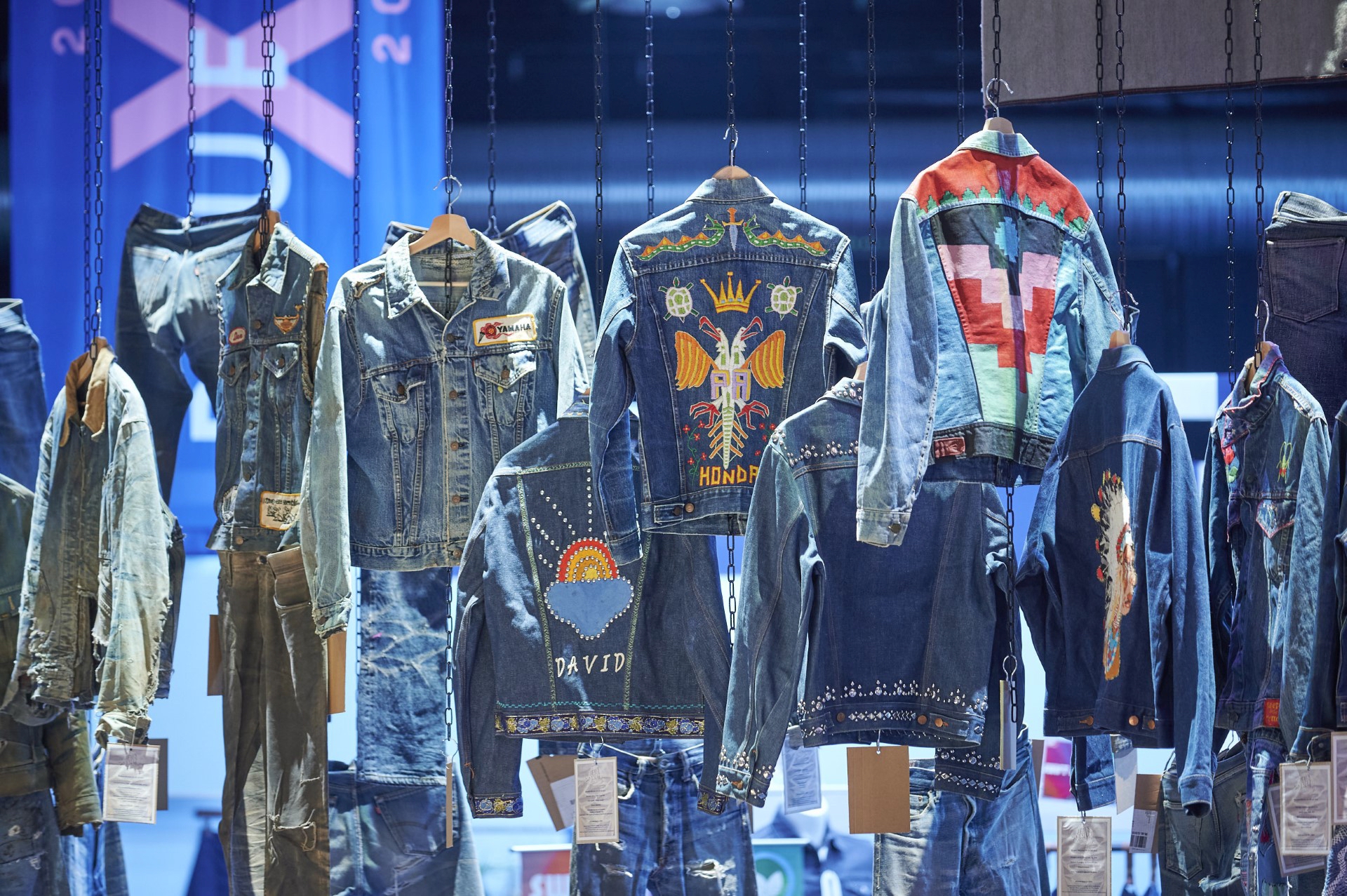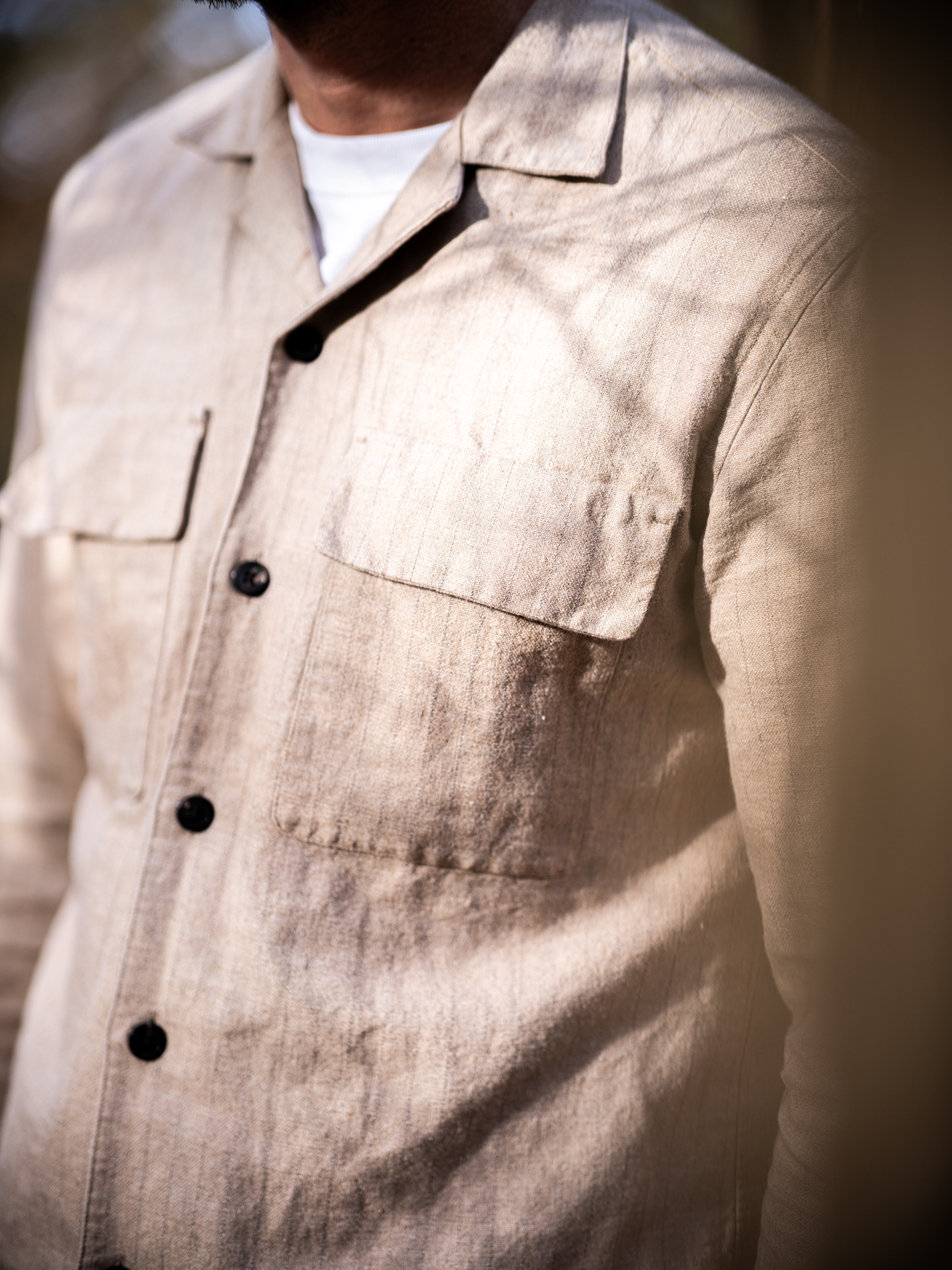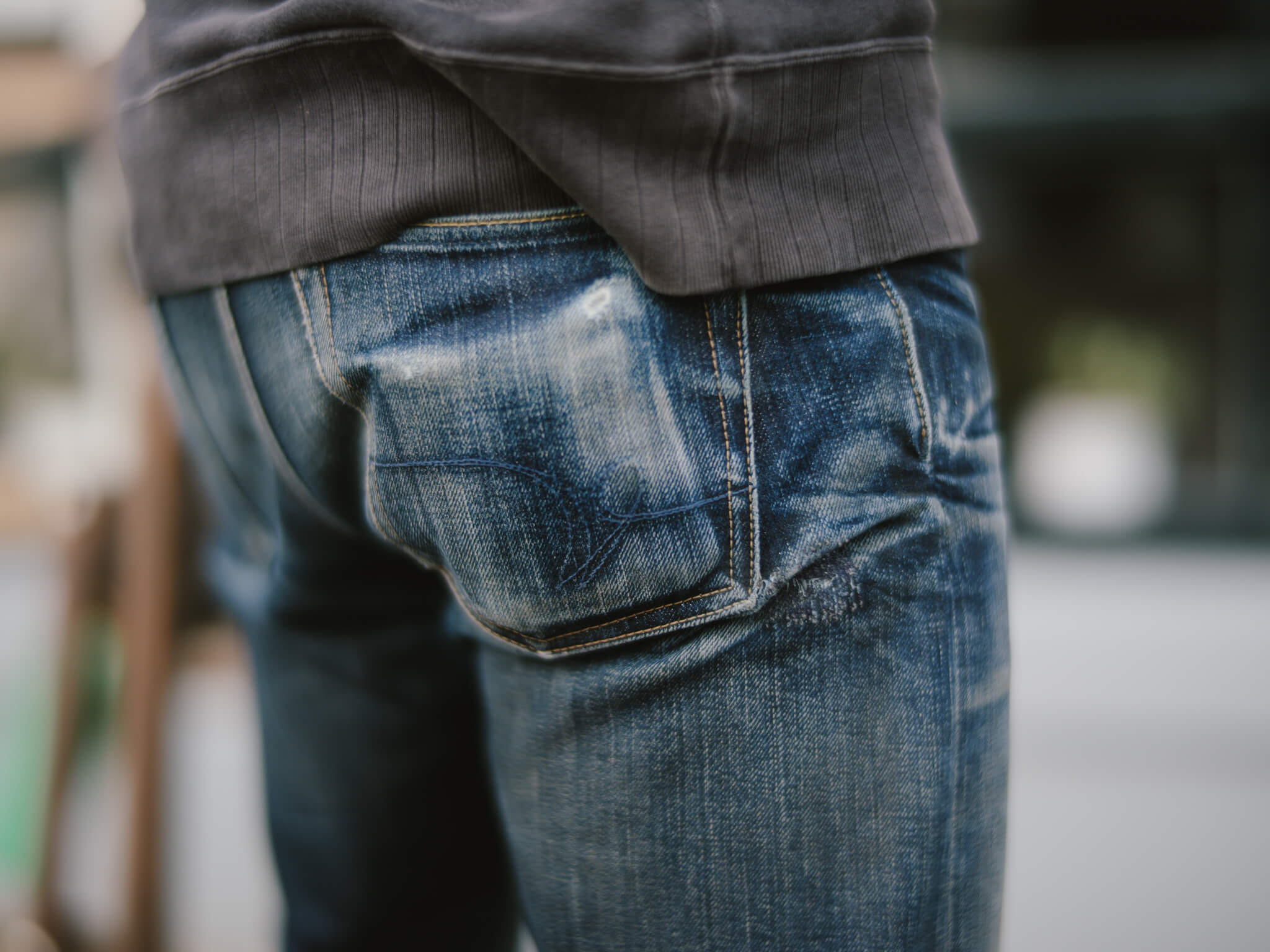Interview with Egor Rasskazov, founder of TWERD
Let me start by introducing myself. My name is Jason, and I’m a denim enthusiast from the Netherlands. This is my first entry for Robin Denim, so a thank you is in place to Robin for giving me the opportunity to contribute to this incredible website. My passion for blue started somewhere in 2013 when I finally ‘got’ the magic of dry denim. By writing about incredible people who share that passion with me, I fuel my love for denim.
Today we bring you the story of Egor Rasskazov, founder, and owner of TWERD’ Manufacturing. This Moscow based one-man-brand has come a long way and recently announced that his very first collection is released in small batches. We sat down with Egor to ask him about being a denim maker in Russia and to share some insights about the items in his first collection.
Although the denim scene in Russia is not very significant, Egor feels very passionate about his ‘Made in Russia’ concept. And looking at some of the garments he has produced so far, this concept looks very promising. Without further ado, we invite you to get yourself acquainted with the story of TWERD’.
Jason, Robin Denim: Egor, please start by introducing yourself.
Egor, TWERD: My name is Egor Rasskazov. I am 30 years old, and I’m from Moscow, Russia. I’ve been working in Fashion Retail from my nineteenth. I have held various positions in different companies. Started out as a salesman in a department store, before moving to the purchasing department. Since it was a big company, it carried various private brands. As a product manager, I was able to grow knowledge about sourcing and development. I got involved in a wide range of processes, traveled to showrooms, sewing factories and textile mills.
Around that time a dream was born that keeps me moving forward even now; to experience and go through the process of sourcing, designing and making a garment. One day I hope to go to Australia to a big farm where they herd sheep and where I can help to shear them. Move to Italy or the UK to visit textile mills and get my hands on fabric made from the harvested wool. I would cut and sew suits out of it and sell them to customers. It was at the Cerutti textile factory in Biella, Italy, where I was inspired. Just thinking about this makes me understand the real value of each garment made.
Then followed a year of service in the army. I had much time to think about the future and what I wanted to do after the year was over. Sometime during the cold Siberian winter, I figured out that I wanted to start making clothing and to do it in Russia. The next five years I worked at Scotch & Soda as part of a Russian buying/sales team. In 2014 I passed a six-month tailoring course where I learned to make patterns and to sew an English suit. This started the path I am on now.

Jason, Robin Denim: Can you tell a little bit more about the specific location in Moscow and the advantages or disadvantages of designing, sourcing and producing in this city?
Egor, TWERD: The workshop is based in an old industrial area on the west of Moscow City. During the Soviet era, the factories produced lots of industrial and household electronics. The site has its own railroad and lots of eerie industrial spots that are absolutely amazing for shooting (with a camera obviously). I’m pretty in love with the old industrial buildings.
Like in every big city you can easily find the basic sewing supplies and fabrics, printing services, metal works if needed. Nevertheless, the number of denim makers in Moscow – or Russia for that matter – is limited. There are no local agents or supplying companies dedicated to the needs of denim makers. Everything I work with – from the denim to the hardware – is imported with great effort from Japan.
Jason, Robin Denim: So, when did you start the brand TWERD’ and what steps did you have to take before releasing your first collection?
Egor, TWERD: It’s difficult to point out precisely the day when it all started. In the summer of 2016, I sew my first denim coverall to ride my motorcycle. To be honest, it wasn’t too good looking. But the idea was born to make denim goods, especially coveralls. Early spring 2017 I decided to quit my day job and start my one-man brand. By then I developed a couple of patterns, sourced a few yards of selvedge denim and had huge ambitions to begin making denim garments.
That whole summer I spent creating designs, adjusting patterns, endlessly making samples. I was trying every pattern making method I could find while simultaneously trying to educate myself on the fundamental logic of pattern making, construction, proportions and so on. In the meantime, I was making some made-to-order denim garments, but I also designed and produced a batch of denim jackets for a local jeans brand.
In August 2017 I released my first official model – a white denim coverall – made from a Candiani denim that I found by chance at a local fabric shop. I made seven of them. After those days I started thinking about a brand name and sourcing selvedge denim fabrics. It took me months to find the denim fabrics, but only a short moment to find the right name. Finally, in the winter of 2017, I came across someone in Japan who helped me get my hands on some selvedge denim fabrics. To this day, it’s difficult to source it. I made some sketches representing my essential vision of my outfits and garments that I wanted to make first. Then I developed patterns for it. Branding designs followed shortly after that and finally, everything seemed ready to start.
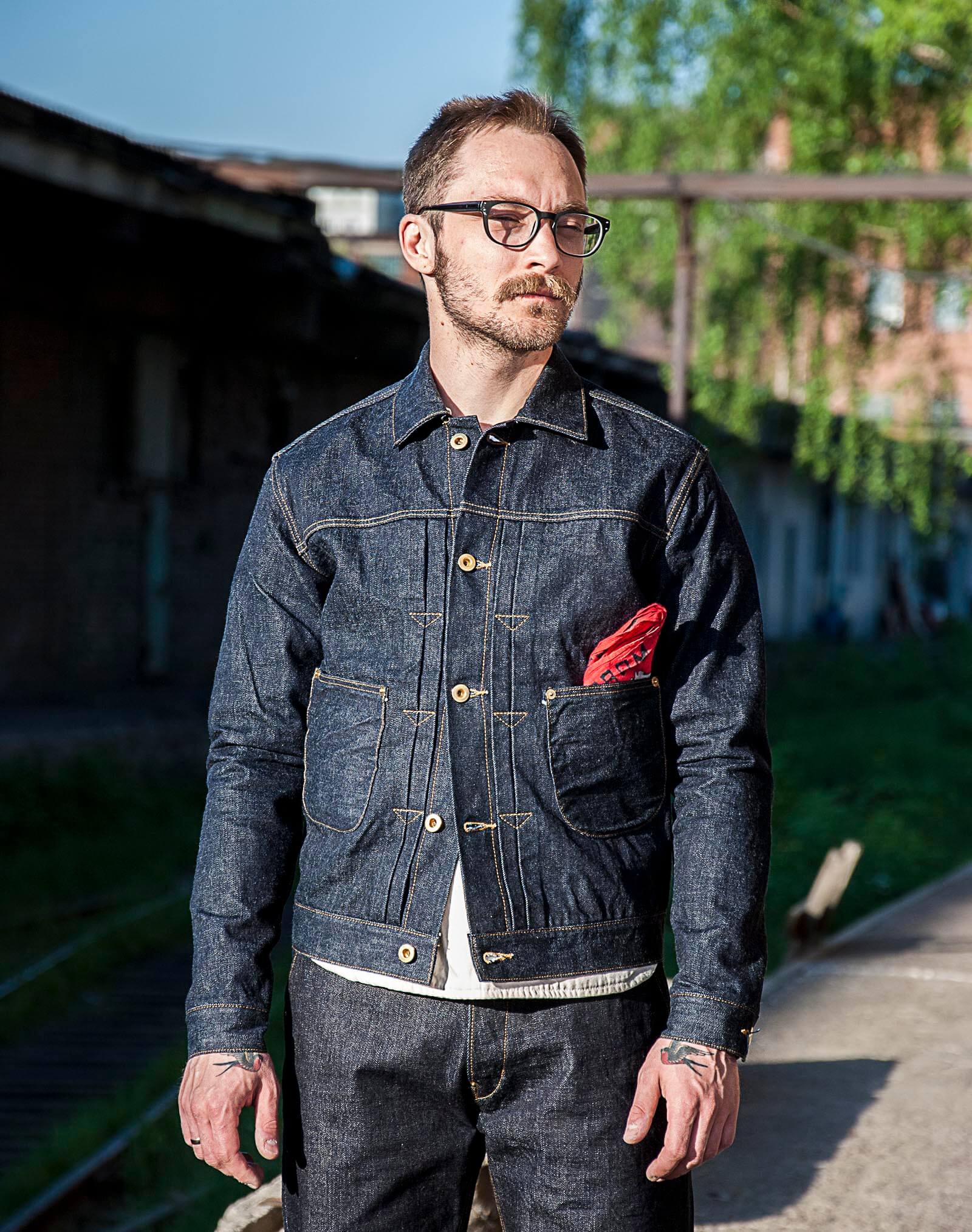
Jason, Robin Denim: Tell us about the name TWERD’ and how it relates to the band’s values.
Egor, TWERD: TWERD’ Kustarnoye Proizvodstvo is an old-fashioned Russian word meaning ‘the earth’ as in ‘terra firma’ from the Bible. For me, it represents something solid and sustainable. Tough and rough. It’s like the landscapes that we change and the elements that change us. Just like denim. For me it’s special because it’s a Russian word and when it’s combined with the words Kustarnoye (artisanal) and Proizvodstvo (production) it tells what the brand stands for; low capacity, early-industrial, all in-house production.
During my time in the army, I pondered about what I wanted from life and what I would devote myself to. Since I had experience in textile and garment production, I decided that I wanted to start my clothing brand and to produce everything in-house. Something that can be passed onto future generations. Something that can be proudly called ‘Made in Russia.’
What is important is that it’s simple and utilitarian, while on the other hand, it has to be good looking. The ‘Made in Russia’ concept is special to me as I cannot stop wondering about how we, as the Soviet Union, gained such huge industrial capacities and how we, as the Russian Federation, lost it all and became reckless traders of earth’s resources. I believe that one day I’ll release a piece that is made here, in Russia, using only locally sourced materials.
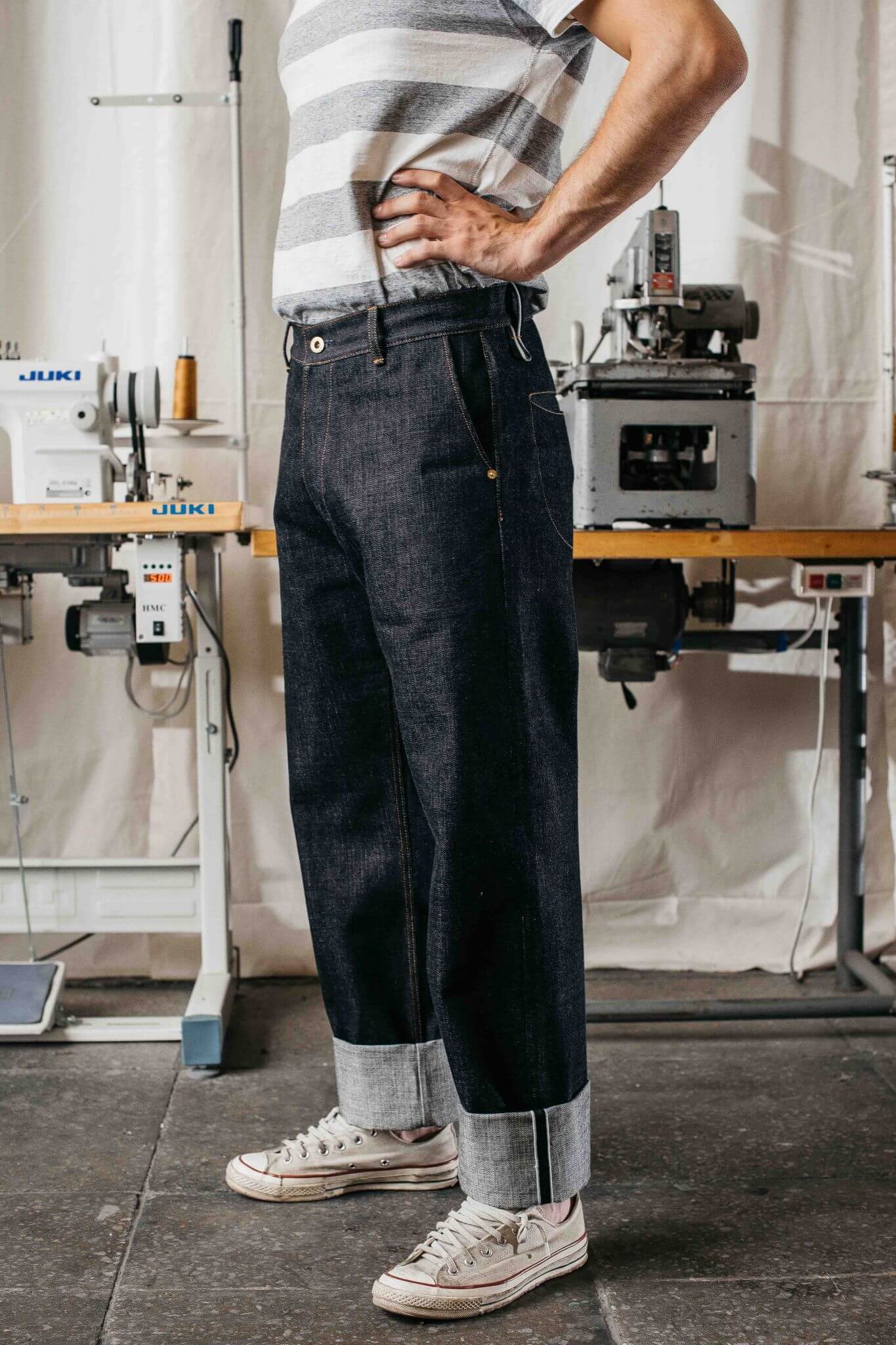
Jason, Robin Denim: You are currently working on your first collection. Can you tell us something about the individual pieces?
Egor, TWERD: Well, it’s not going to be a large batch consisting of multiple models given that I only have two hands, a limited number of machines and it’s still hard to source the fabrics I want. There will be drops from time to time. But I can say that I have a list of styles that I intend to release and that will go in production this summer, such as:
A Denim Jacket inspired by old pictures of the Transcontinental Jacket. I’m fond of the design of this jacket with the round shaped pockets. The body block is roomy, yet with slightly tapered slim sleeves. The back cinch is there for aesthetic reasons, and I love how it looks. The pocket cinches and sleeves are riveted. The jacket has five two sprong buttons, all made from raw brass. The whole jacket is constructed on a single needle machine with flat felled seams. Even the armpits are constructed this way. This way it looks just as good on the inside as it does on the outside. For the jacket, I used a soft and hairy 13 oz. white lined unsanforized denim from Kuroki Mills.
All Utility Work Trousers. It has a mid-high waist and a relaxed tapered fit and is made from a rough and tough 15.3 oz. pink lined unsanforized selvedge denim from Kuroki Mills. It’s a tribute to all worker pants, denim or not. They are rigid enough to stand on their own before the first wash or soak. They get softer after a first wash but remain strong and durable. It’s a fast fader! The design consists of two riveted side pockets with a selvedge detailed coin pocket on the right, one riveted patch pocket and another sewn-in ‘hole’ at the back. Just like the denim jacket, the trousers are made using a single needle construction, yet with some edge lock trimmings on the top side seams. It has a five button closure with raw brass hardware.
Kinori White Shop Shirt. This shirt is inspired by a mixture of American navy and worker shirts, combined with Russian folk shirts that later became part of the Soviet army uniform. It is a sort of overshirt, and it’s made out of a 10 oz. Kinori white Japanese 2/1 denim with half closure and round chest pockets. It has red line selvedge details on the side seams, the closure and collar.
The Coverall! With this garment, I started TWERD’ last summer. I worked hard to find a balanced and well-designed construction. It is my beloved piece and thus far my best creation. The coverall is by definition the most utilitarian garment, and it combines the top and bottom as one solid piece of clothing. It comes in two models with different fits and construction for blue and white denim. I will definitely re-start production of the white coveralls and will add the blue coveralls along the way.
Caps and hats. These are my small pleasures. I love to make them!
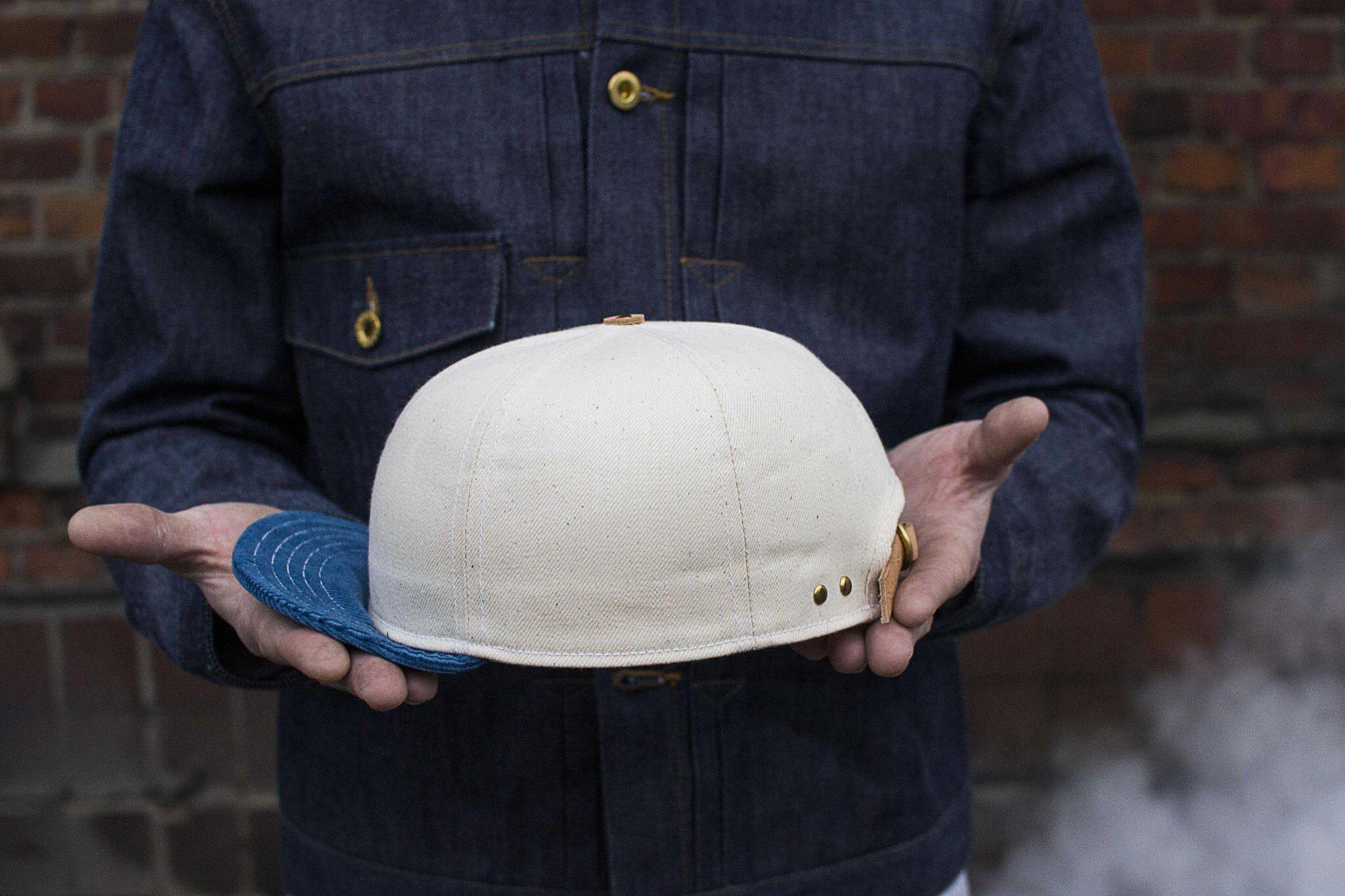
Jason, Robin Denim: That sounds great! So, in your opinion, who is the ‘ideal’ customer?
Egor, TWERD: The coveralls were initially released as a race-coverall meant for custom motorcycle enthusiasts such as myself. I targeted cafe racer clubs and the community surrounding them. Later on, I realized that I don’t need or want to focus on any specifically defined audience. I just want to make the best designs I can, make great products with the best needlework my hands can carry out. It will be appreciated by good people out there that will wear my garments.
Obviously, I would be thrilled to see my garments on people dedicated to crafts and arts, old motorcycles and hot rod builders, funk and rock musicians, small bar and cafe founders, beer brewers and coffee roasters. In general, on all people who devoted themselves to craft. People who get that ‘a little’ is way more than ‘a lot.’
Jason, Robin Denim: Thank you for your time and for sharing your story. We have one last question for you. You know that Robin Denim is all about sharing the passion for blue. Where does your love for denim come from?
Egor, TWERD: I learned about raw denim at PROJECT in Las Vegas in the spring of 2011. On the internet, I learned even more. Mostly through YouTube videos. In 2012 I met Alex Jaspers form Scotch & Soda in person. You sometimes meet people that inspire you with their ideas. It seems I met some of them at the right time. I also got inspired by Roy Slaper via Cool Hunting videos and by Ryan Grant-Hays, master tailor of Levi’s Made to Order, through Cut & Show from Complex. These three people were definitely the first to help me fall in love with denim.
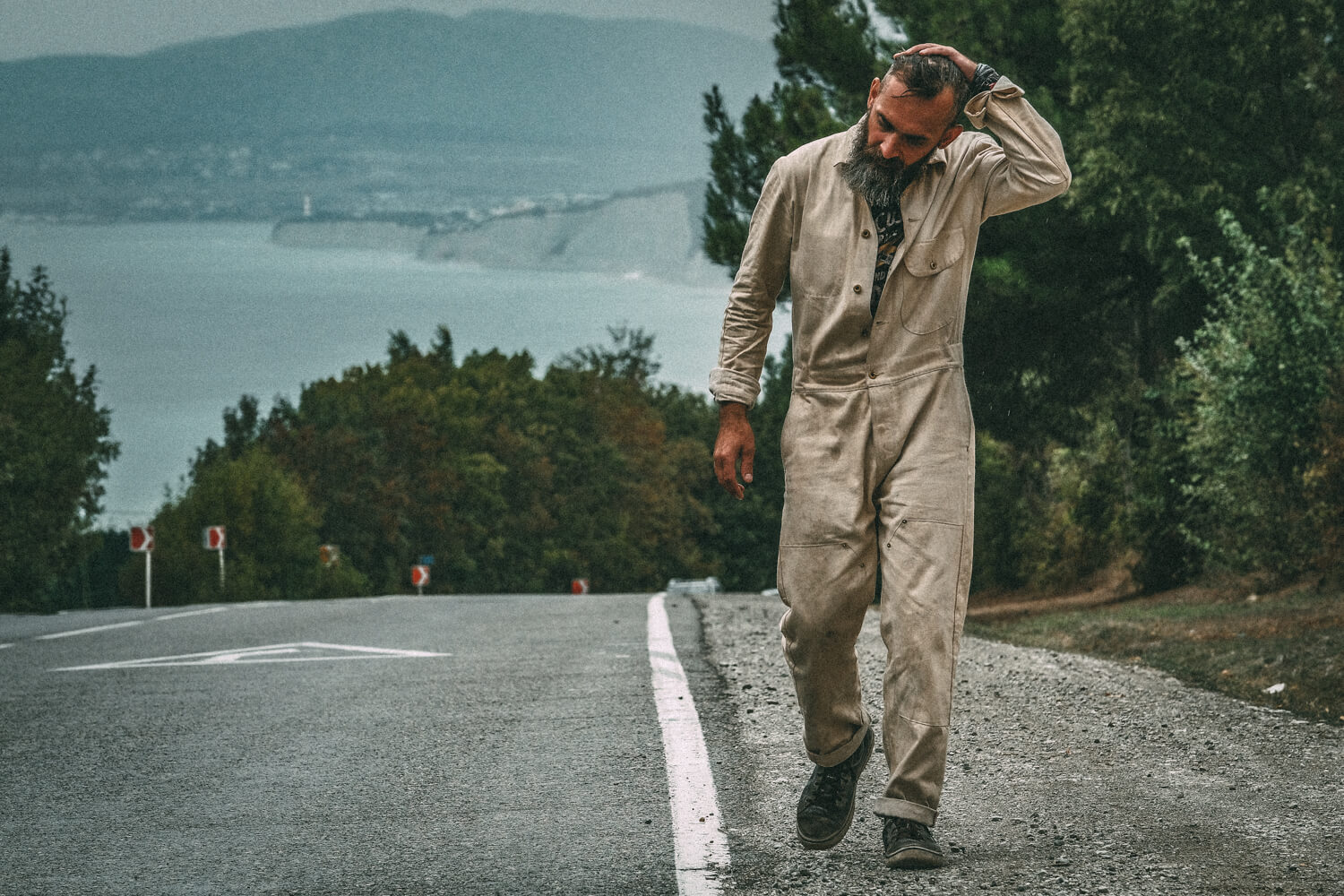

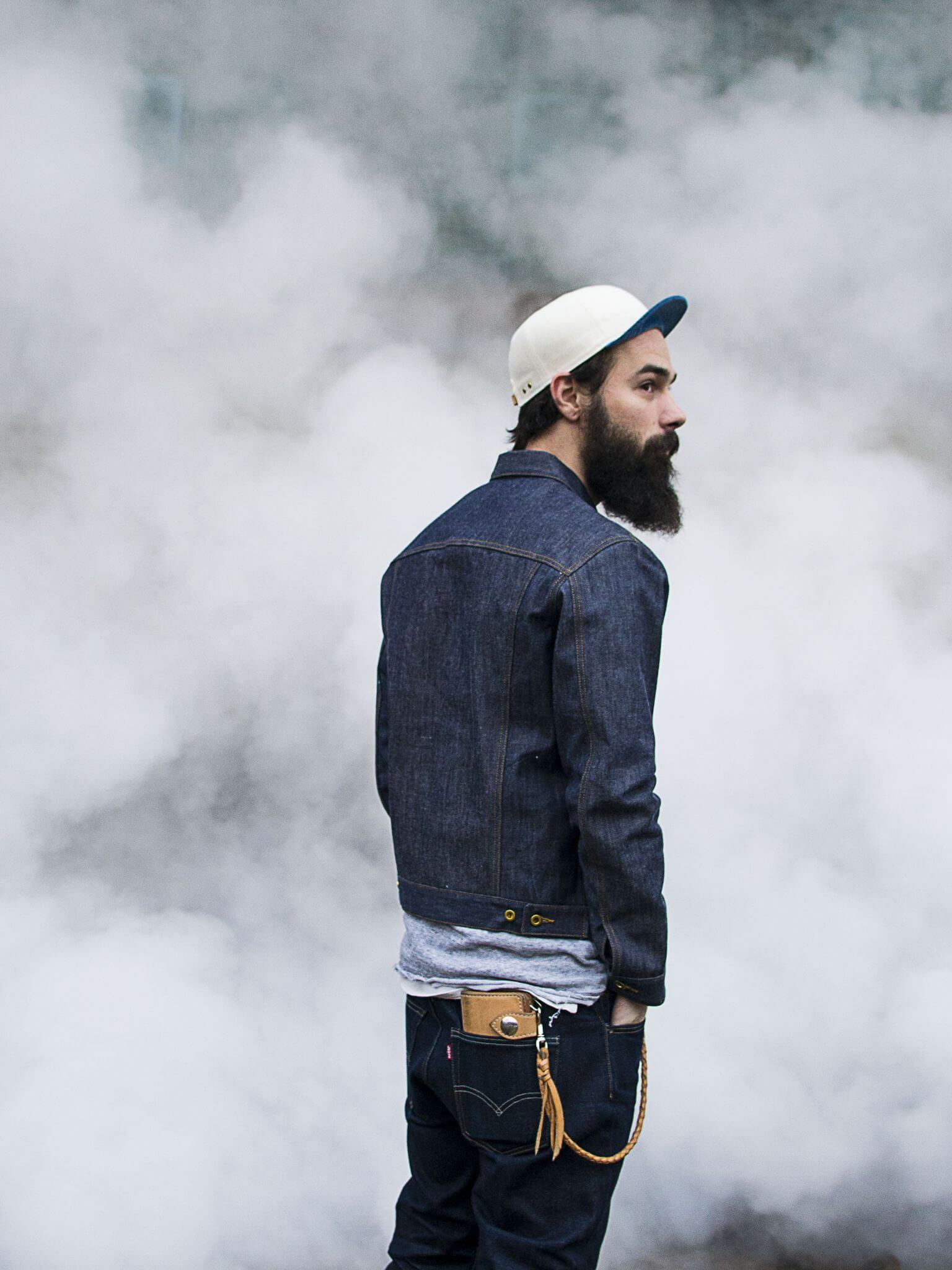
 Share
Share
 Tweet
Tweet

